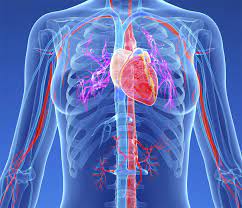The way diabetes affects humans!
By M.Y.Siddiqui
Recent death of a dear friend from complications arising out of diabetics has prompted me to write all about this fast growing ailments. Considered as a life style disease in medical parlance, if not taken care of, diabetes may result in severe complications like urinary track infection, digestive track infection, esophagus infection, resulting in kidney failure, stroke, heart failure, gangrene, different types of cancer, loss of eyesight, loss of virility, loss of libido, multiple organ failure, and several other problems. In fact, diabetes is known as a ticking health time bomb. It is also silent killer. Diabetes is a chronic (long-lasting) health condition that affects how ones body turns food into energy. Ones body breaks down most of the food one eats into sugar (glucose) and releases it into ones bloodstream. When ones blood sugar goes up, it signals ones pancreas to release insulin.
Warning bells about India’s fast growing diabetes crisis have been tolling for quite some time now. A recent union health ministry funded study by Indian Council of Medical Research (ICMR) has confirmed the worst. Over 100 million people are now living with diabetes, constituting 11.4 per cent of the population and 11.36 million (05.3 per cent) are pre-diabetics, with sugar levels higher than previously known/estimated, but not high enough to be known as diabetics. These figures are known. There may be many more unreported cases, who die early of complications that are offshoots of diabetes and who are too poor and cannot afford costly treatment regime.
ICMR collaborated with Dr. Mohan’s Diabetes Specialties Centre. The study suggested strategies to prevent prediabetics from turning diabetics. If the government delays further action, number of people with diabetes will increase manifold in short time, henceforth. There has been alarming rise of 44 per cent. The National Family Health Survey of 2019-21 had revealed that 15.6 per cent of men and 13.5 per cent of women had high to very high random blood sugar levels and were on medication to control it. According to ICMR, lifestyle diseases are rising rapidly with number higher than previously thought out.
Projected number of Indians suffering with metabolic non-communicable diseases in 2021 were 101.3 millions diabetics, prediabetics 136 millions, hypertensions 315 millions, obesity (general) 254.2 millions, obesity (abdomen) 351.1 millions and hypercholestrol 213.3 millions. The study revealed further that undiagnosed diabetes posed a major challenge for the system to cope with. Accordingly, estimated number of people with undiagnosed diabetes in 2021 for 20-79 years was 39.4 millions and those diagnosed were 34.8 millions.
Study has revealed diabetes was more prevalent in the southern states, some of which topped NITI Ayog’s health index rankings, and certain northern states. This is because of these states’ relative success with active screening programmes for non-communicable diseases. Further revelation informs prediabetics are most common in some central and northern states, where the prevalence of diabetes is currently low. This poses danger and need accelerated focus on the prediabetics. Prevalence of diabetes is highest in Goa (26.4 percent) followed by Kerala (25.5 percent), Tamil Nadu (14.4 per cent), Himachal Pradesh (13.5 percent), Tripura (11.3 percent), Telengana (9.9 percent), Madhya Pradesh (7.1 percent) and Rajasthan 6.8 percent). ICMR study covered 113,043 adults (79,506 rural and 33,537 urban) aged 20 years and older across 28 states and three union territories from October 2008 to December 2020. All figures are estimated.
Sales of anti-diabetic drugs have been increasing sharply. But high cost of diabetic care can make it out of reach for many. It is pocket pinching. Despite the efforts of the government to provide affordable drugs, the cost of diabetic care remains high, making it out of reach for majority of people. Union government has reduced prices of diabetic drugs along with some other life saving drugs recently. Overall diabetes and prediabetes care market in the country is estimated to touch $60 billion in short times to come. In 2020-21 it was $17 billion, according to RedSeer Consulting. A diabetic patient, averagely, spends Rs.11, 000 yearly in India, of which 55 per cent is on medication. Non-medicine expenditure on monitoring devices, physician consultations constitute 28 per cent expenses and lifestyle changes like diet and weight management take 13 per cent of expenses. From shelling out Rs.6000 annually at age 30, the care cost grows three times by the time a diabetic reaches 60 years. This makes a stronger case for 75 per cent of diabetics for affordable diabetic care with the average diabetic population with a monthly household income of Rs.40, 000 and lower.
Worrying signs of diabetes include sitting for long hours, unavoidable fallouts of modern life style and jobs. This, combined with poor diet (fast foods or junk foods), is giving impetus to ever-rising type-2 diabetes numbers. Sedentary lifestyle is all too common. A study by ICMR published in May 2022 shows insufficient physical activity among Indian adults among the reasons for growth of diabetes. Physical activity has been defined when a person breathes harder than normal. Indians have been found sedentary for over five hours a day normally excluding sleeping time. Men are physically more active, averaging 110 minutes a day, while women spend half of that. The United Nations World Health Organisation’s guidelines provide for a minimum of 150-300 minutes a week moderate intensity exercises to avert diabetic crisis and sustain it life long to manage diabetics.
There are expert physicians across the country with their known public credentials having reversed diabetes with a rigorous regimen of diet, exercises, proper medication and positive mindset of patients. Cost is high with management schedule demanding harsh discipline to live a healthy, normal and long life!
Powered by Froala Editor




LEAVE A REPLY